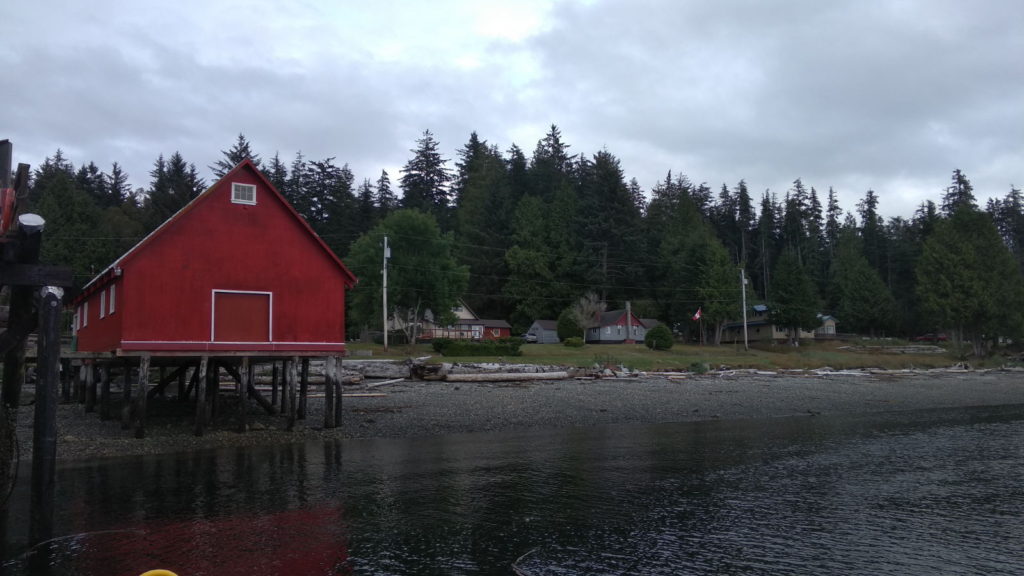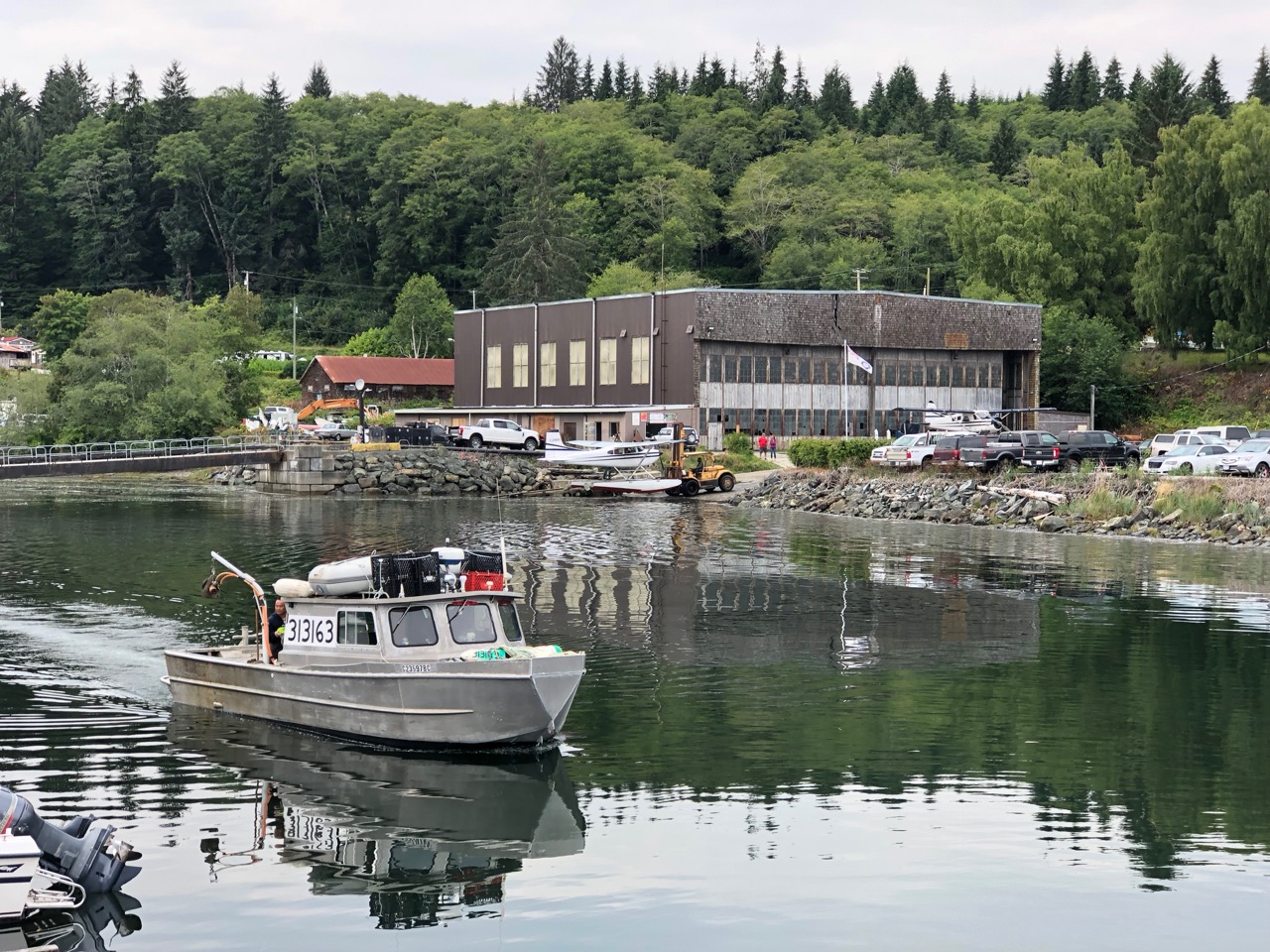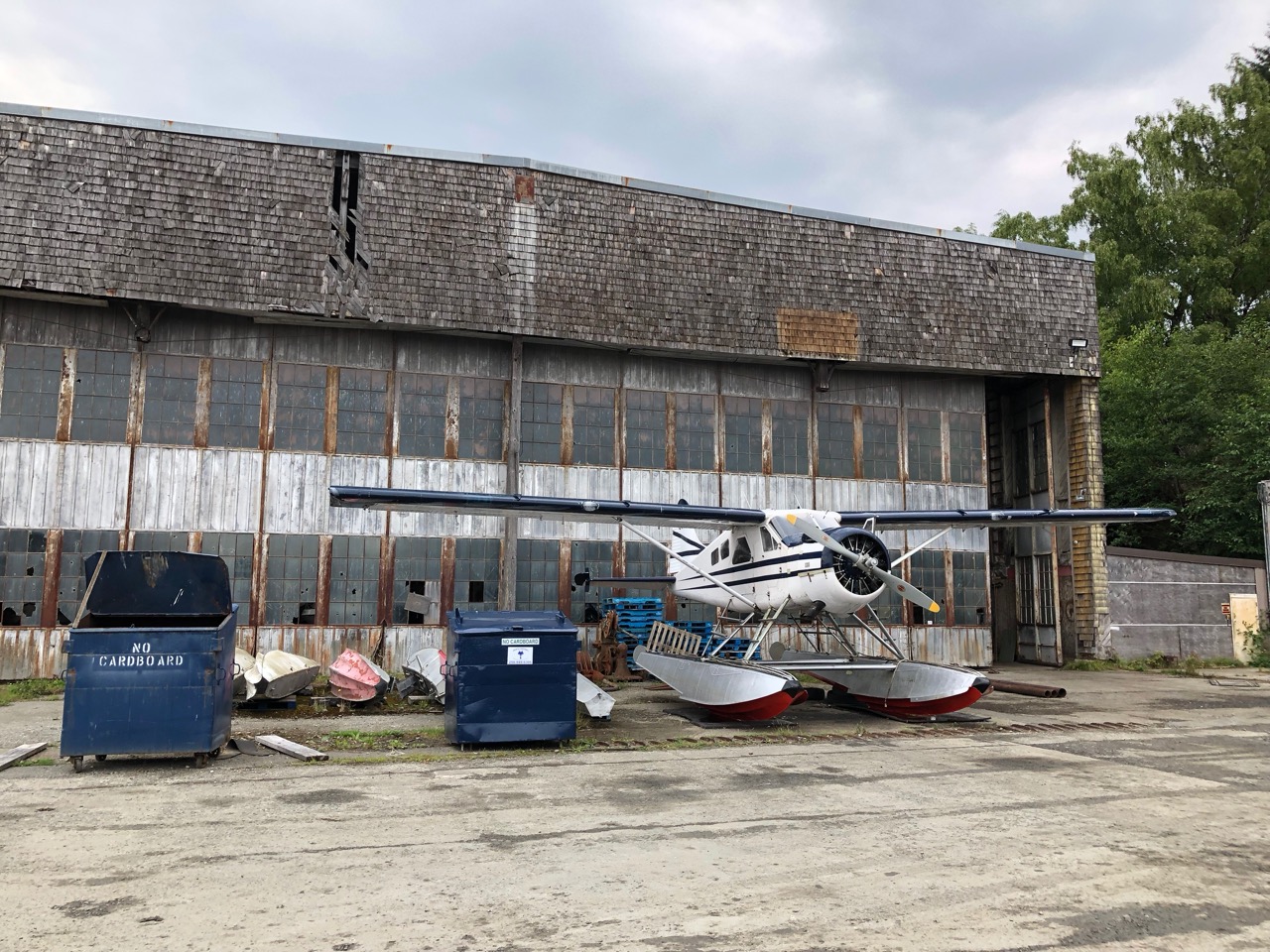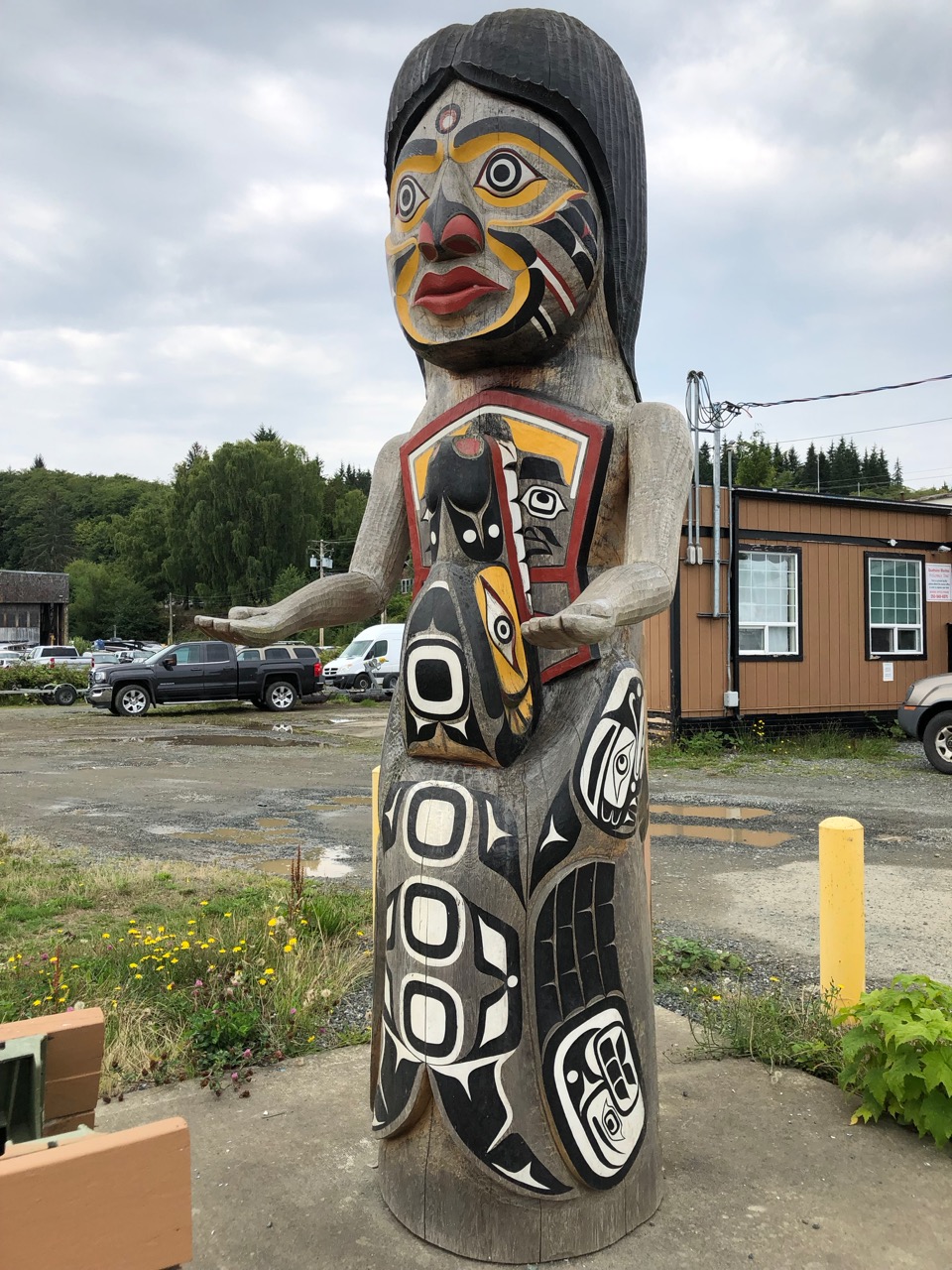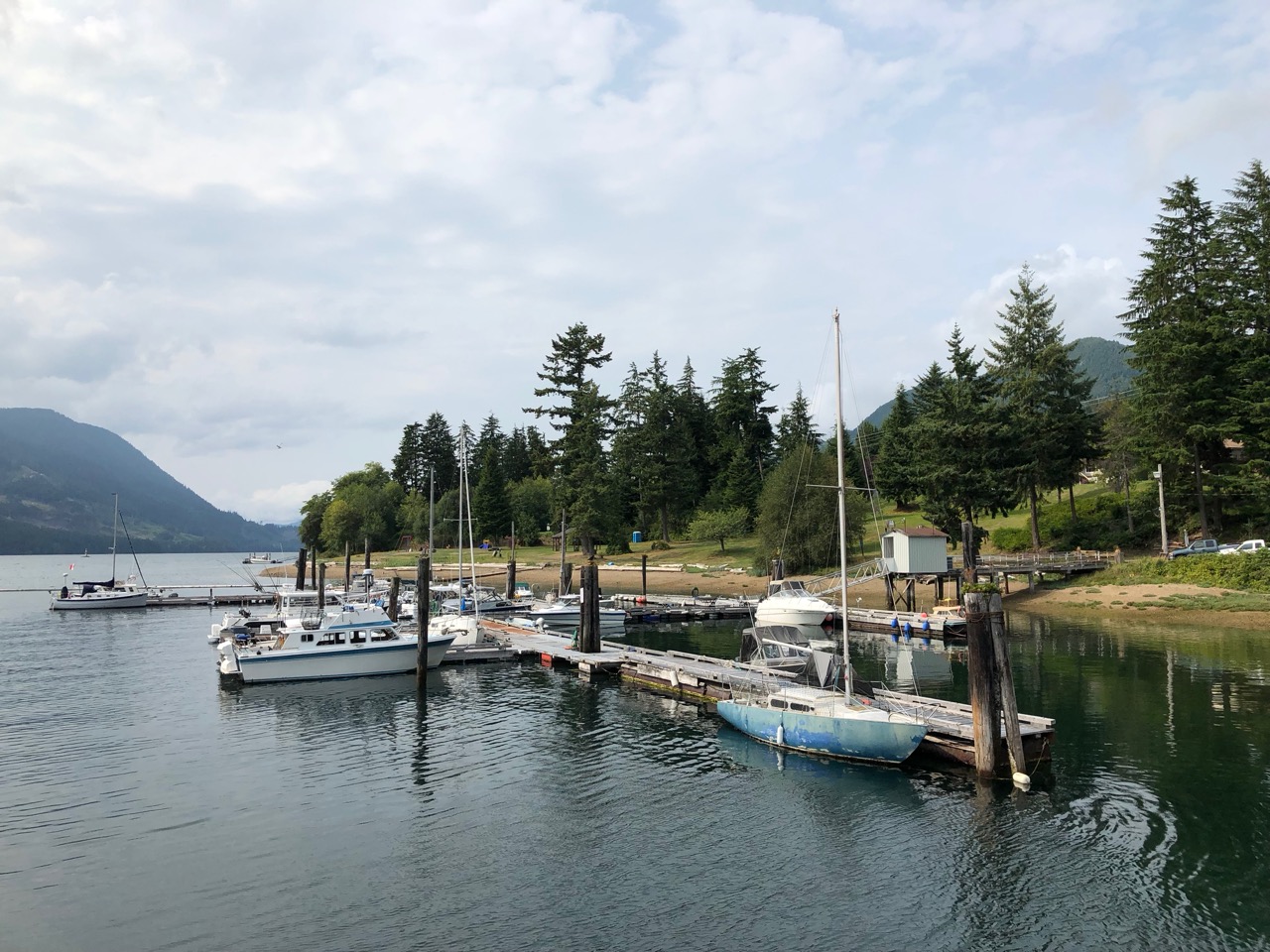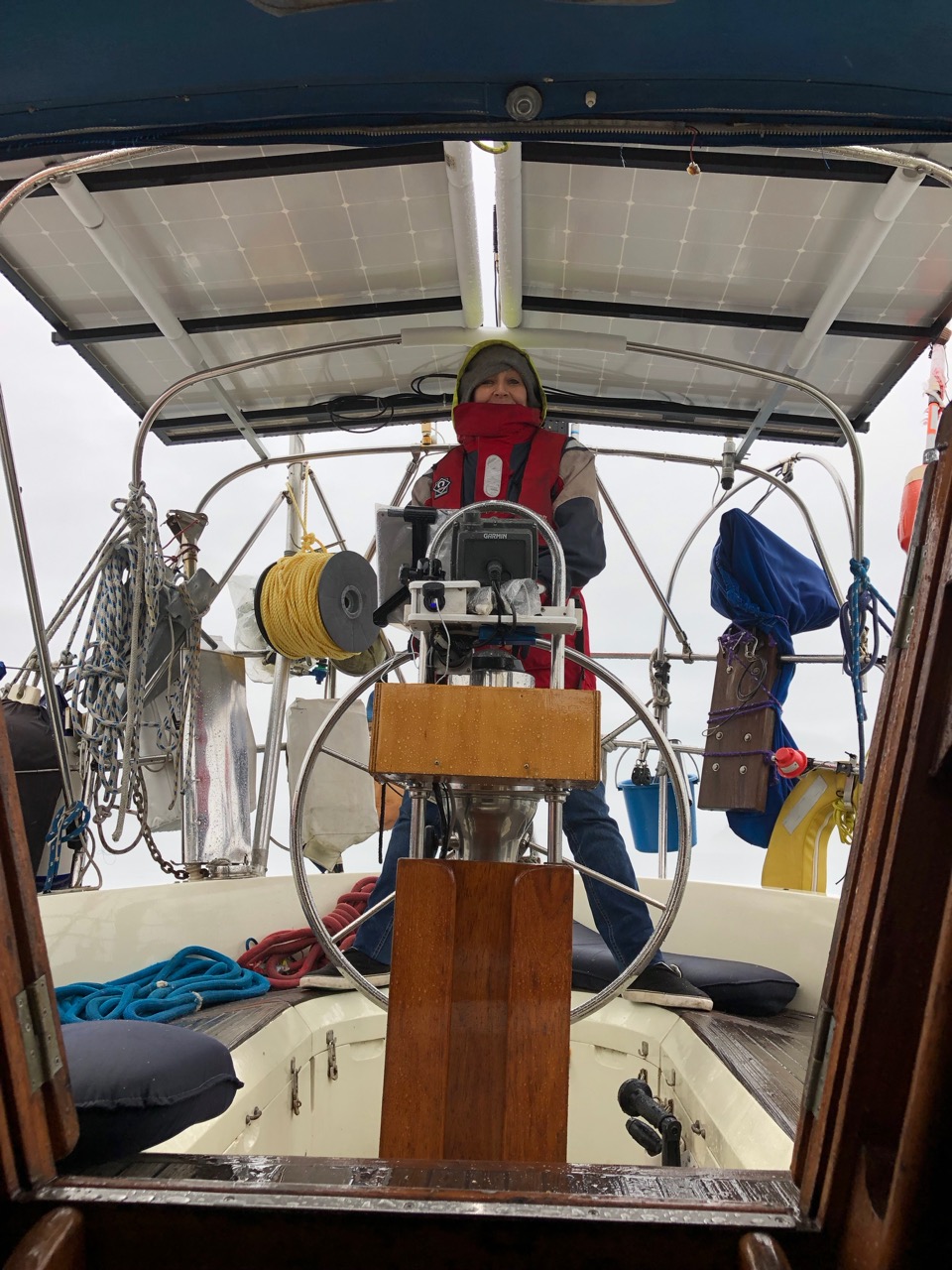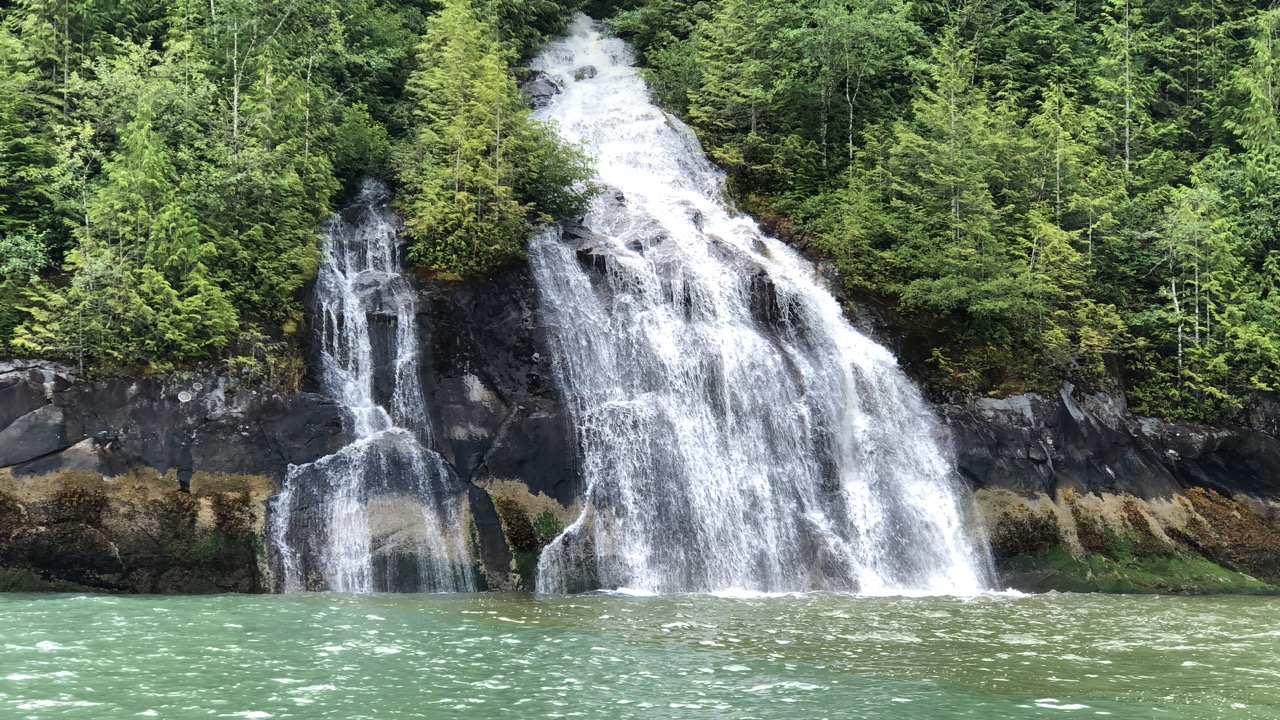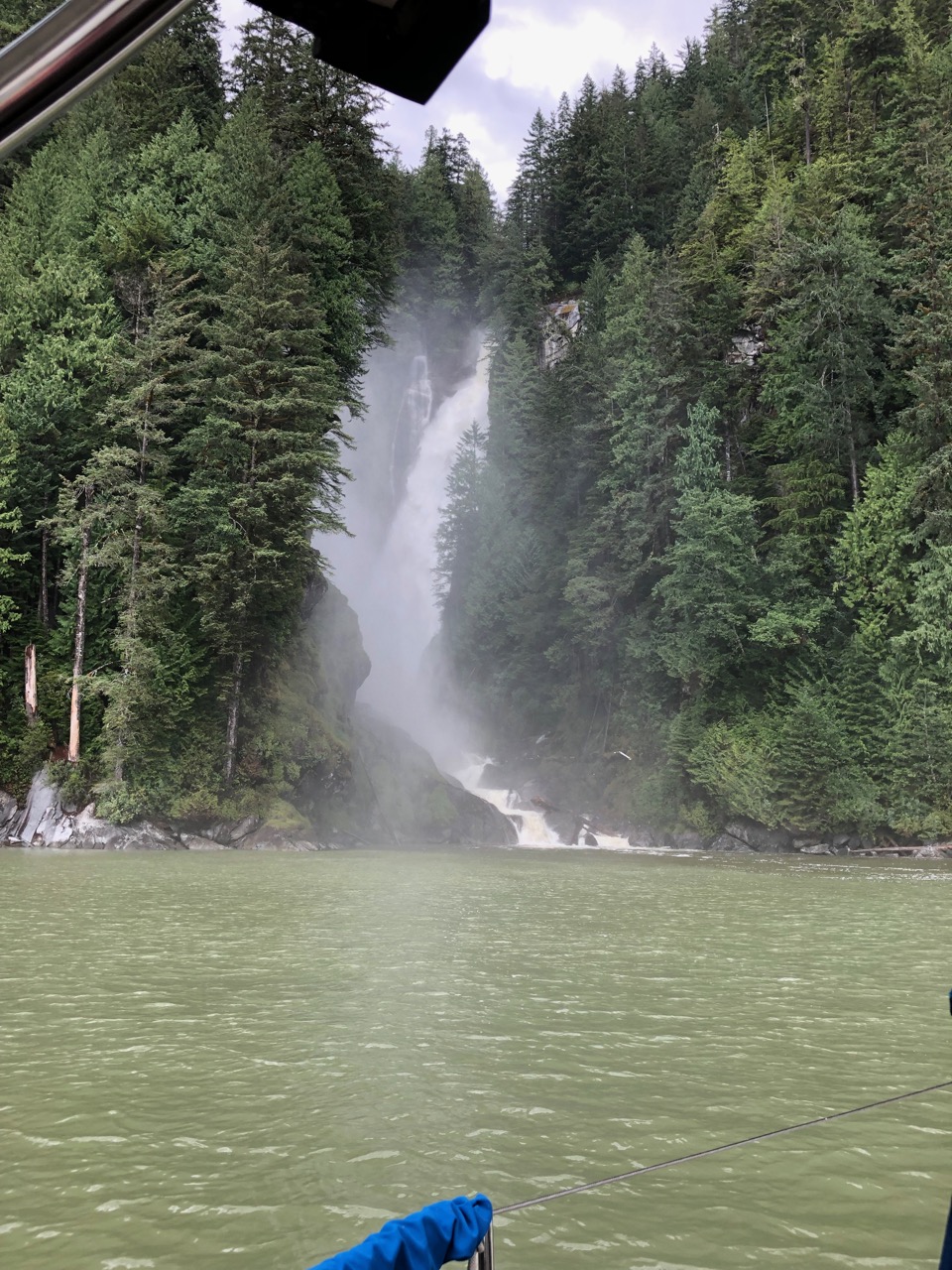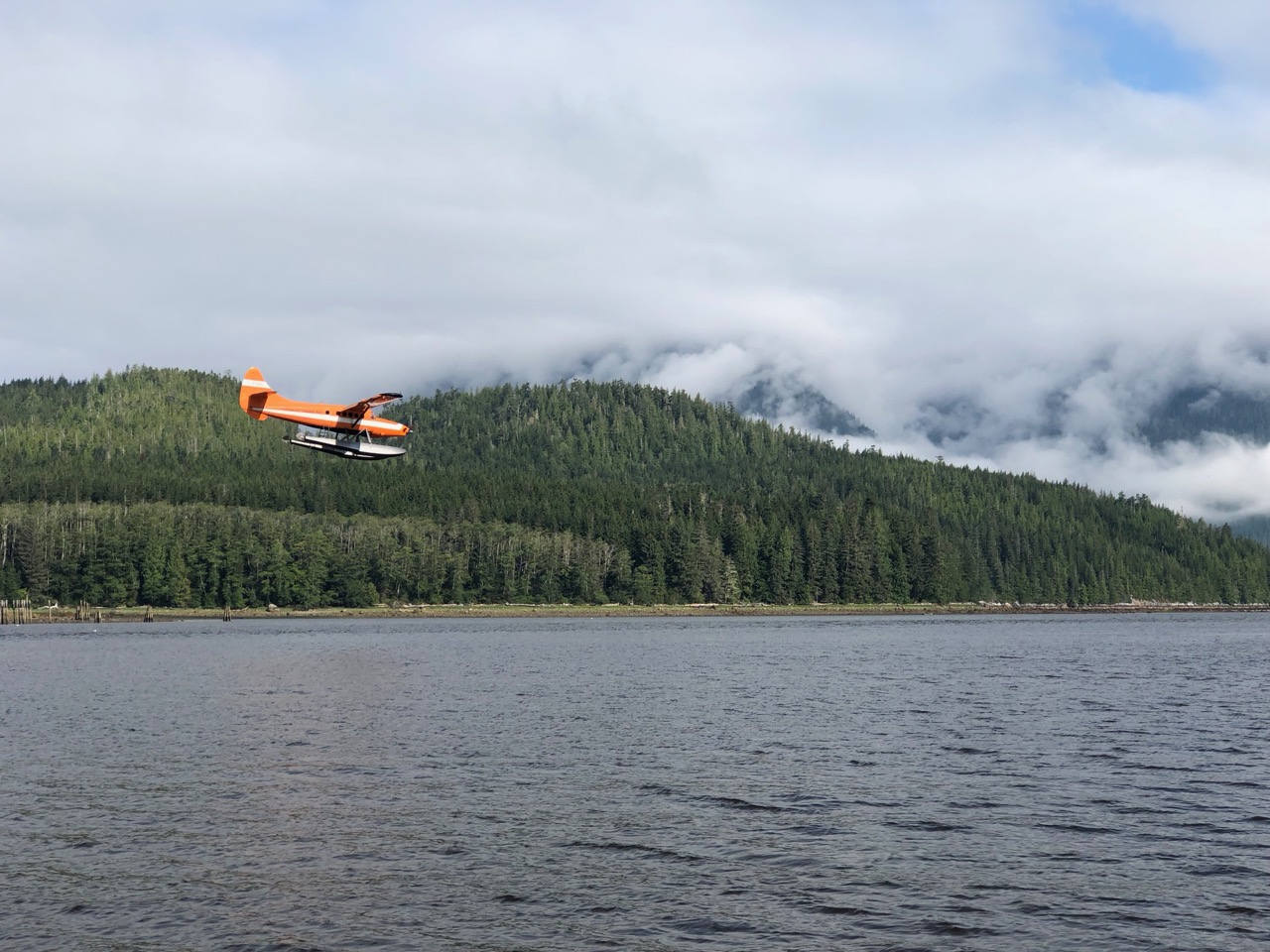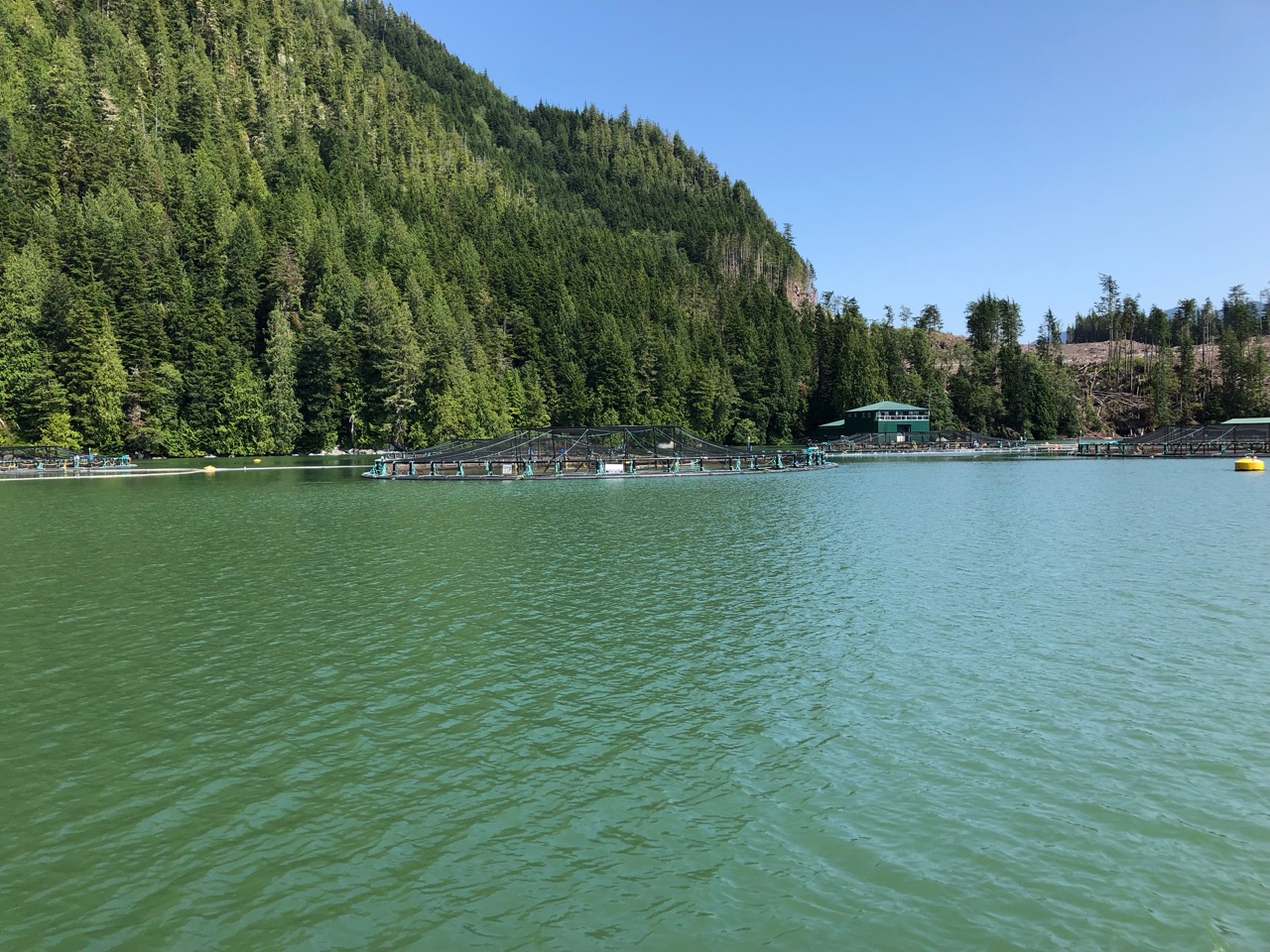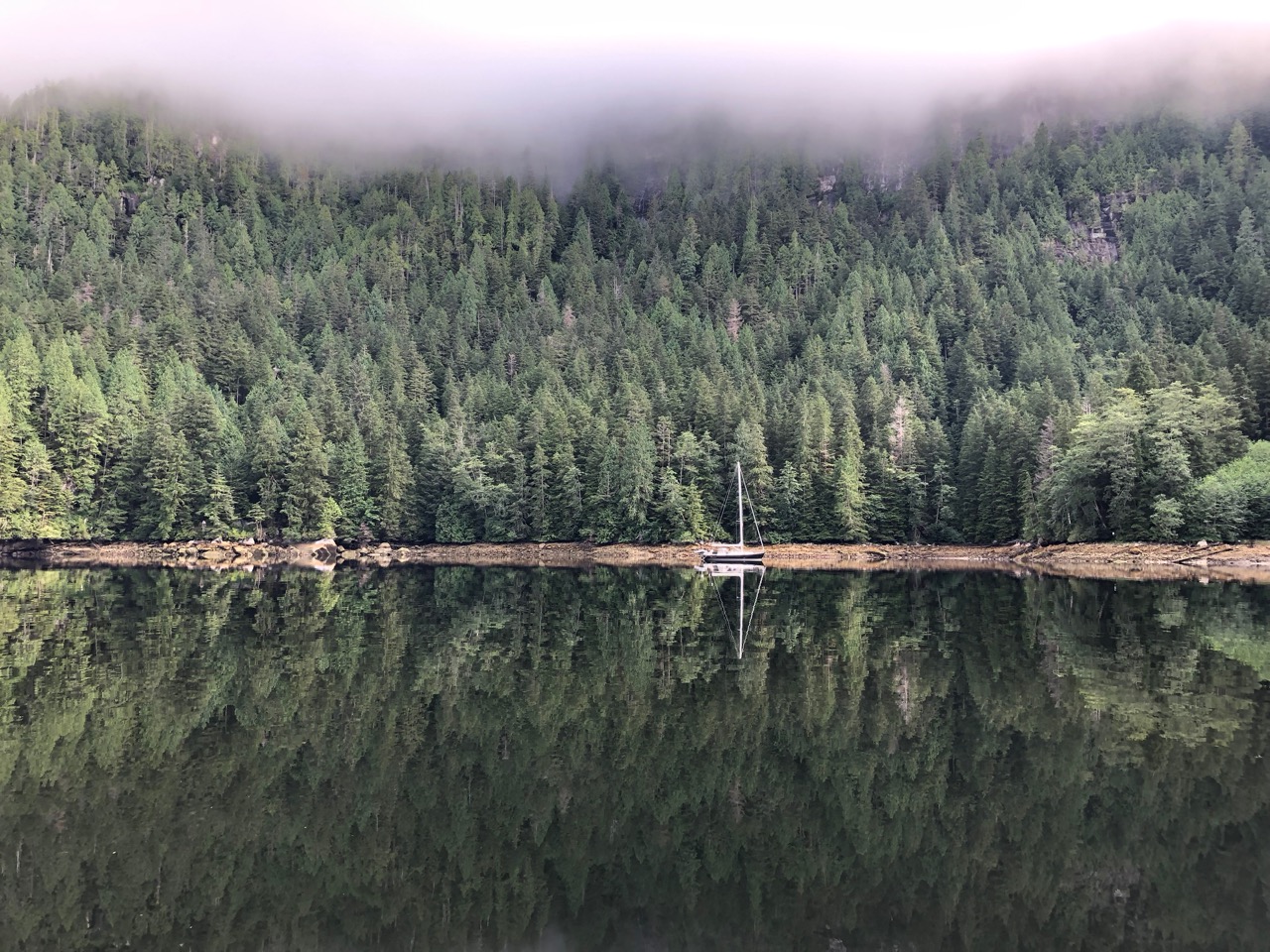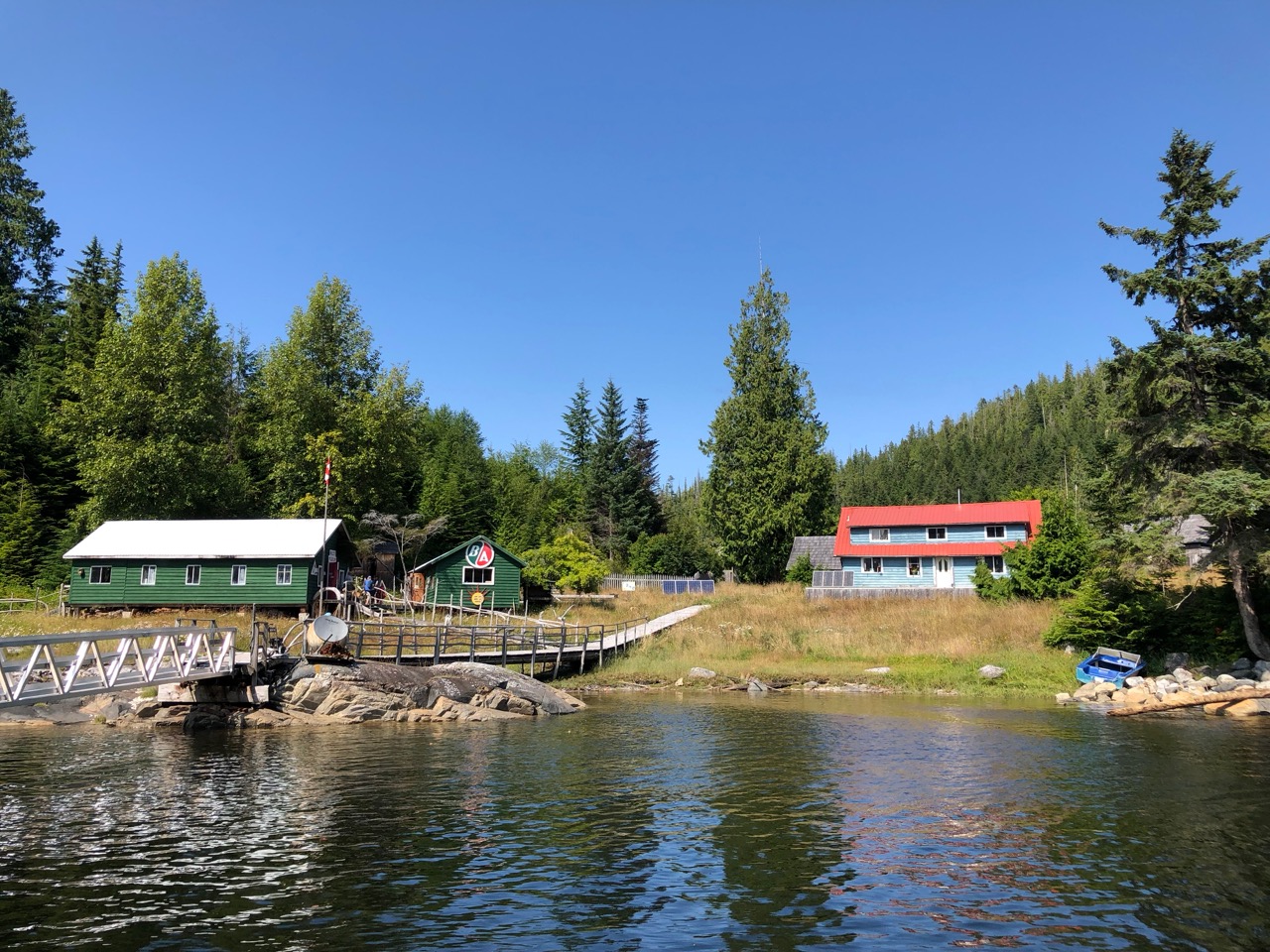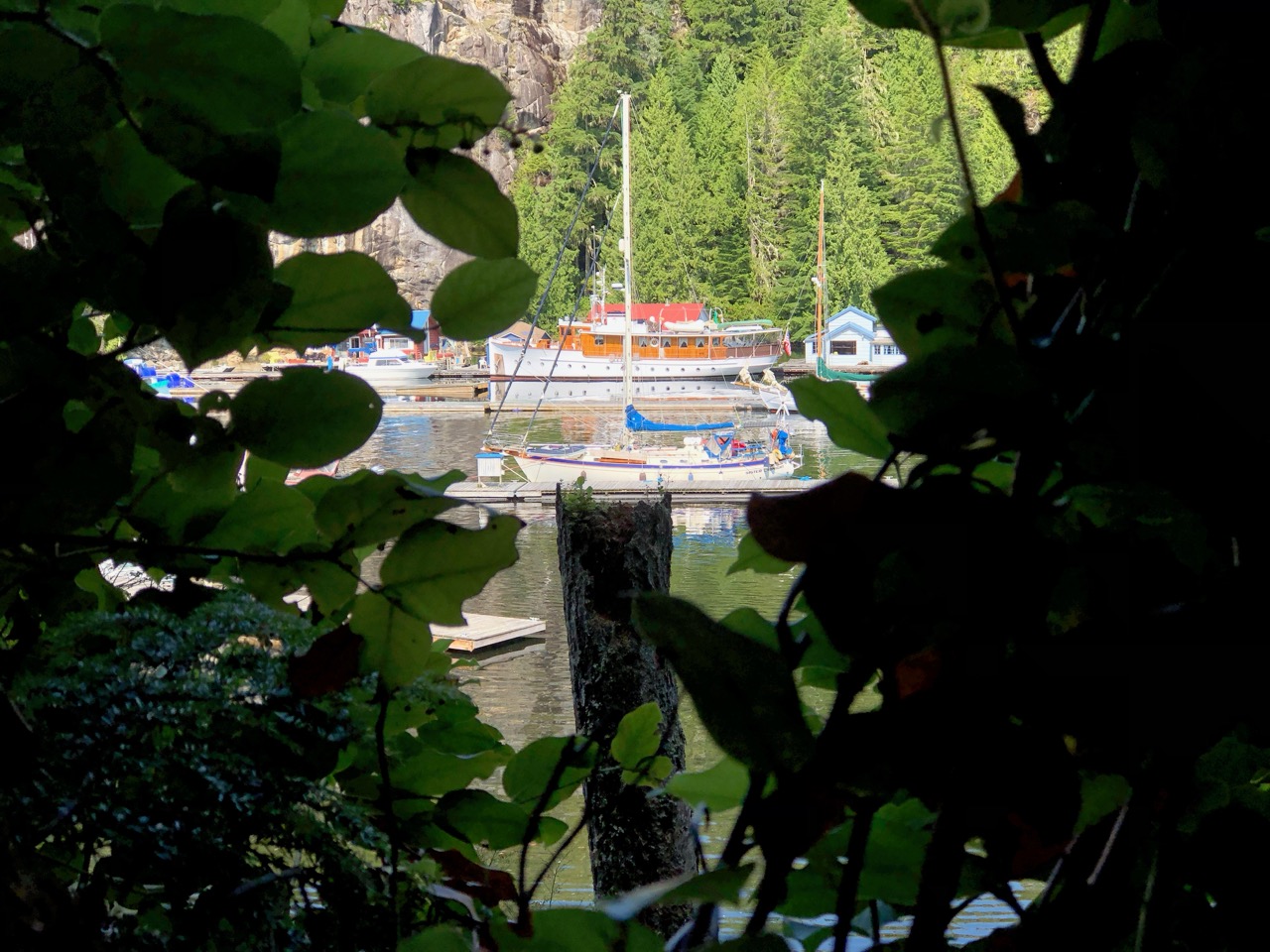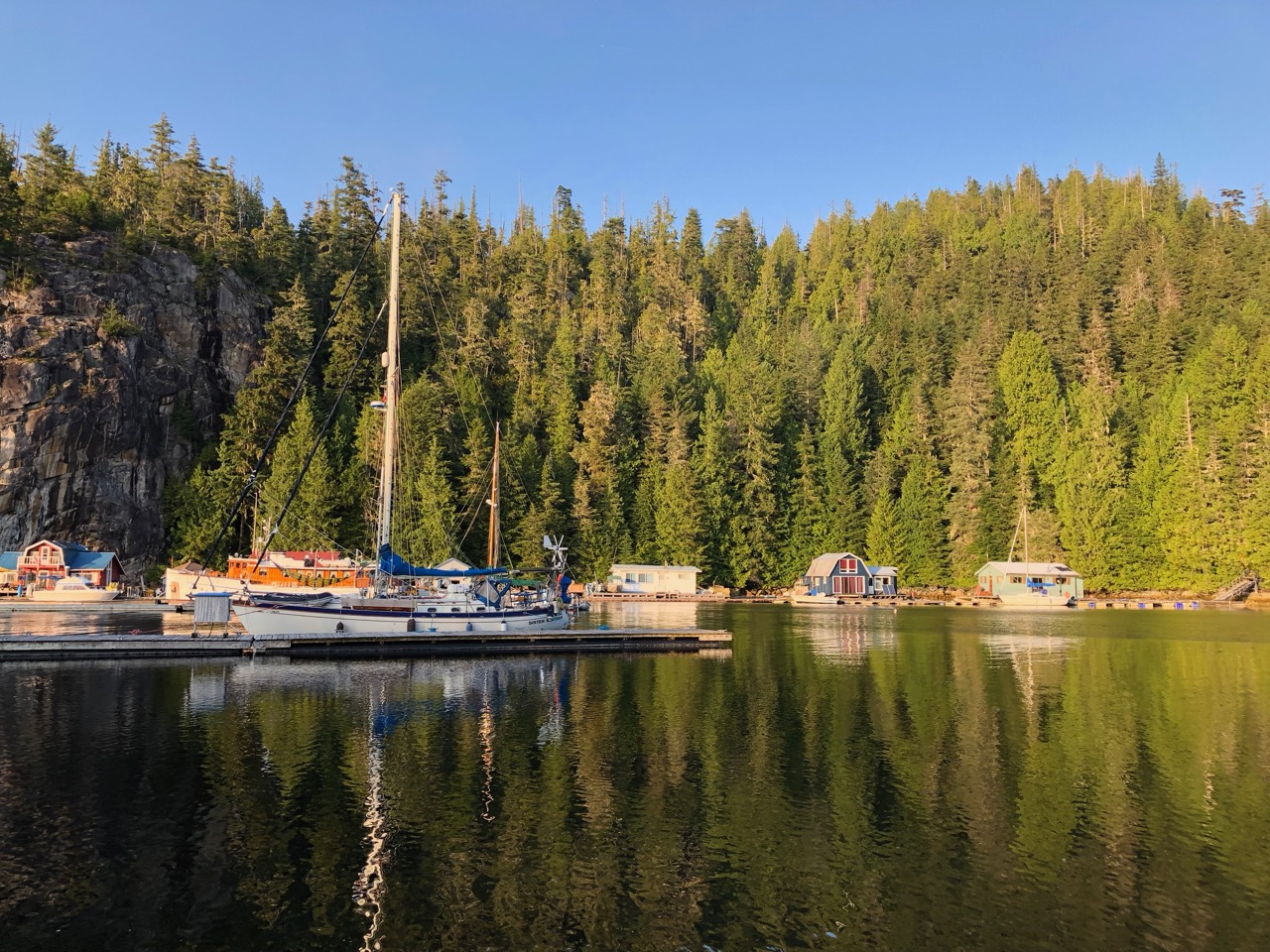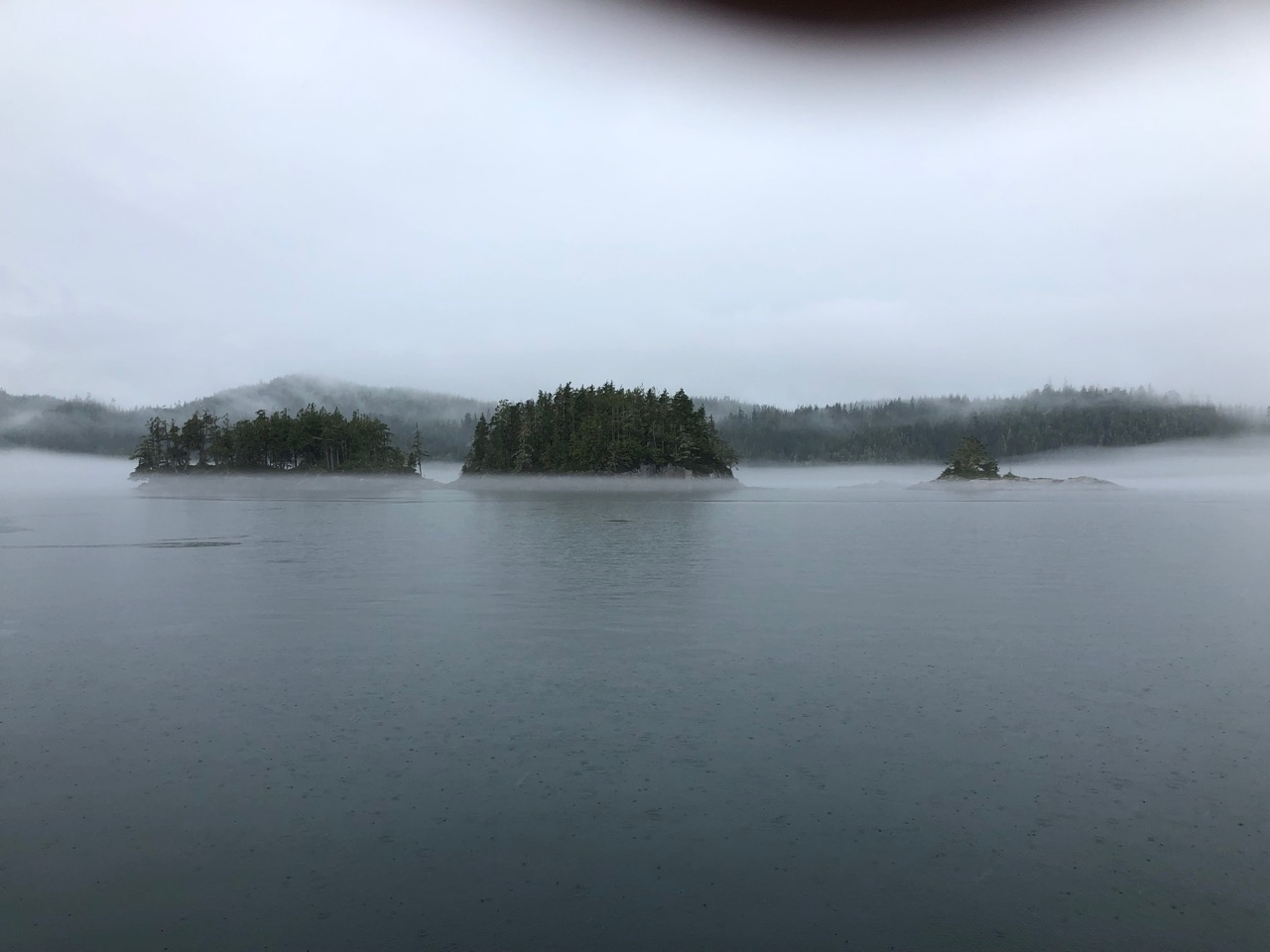Laden down with bags containing our maximum allowance of 23kg each, we journeyed from West Kirby, Merseyside to Manchester Airport for a 10 30 am flight bound for Vancouver, Canada. Eight hours later we touched down at around 11 30 am on the same day, effectively avoiding any hours of darkness, or indeed, sleep! The short amount of time that we were outside before being shunted into the arrivals terminal felt warm, with clear skies and the promise of a hot day ahead. This was Vancouver, however and temperatures tend to be lower on Vancouver Island, which would be our next port of call. Before that next leg, though, we had to ‘walk the walk’. By this I mean getting in line with hundreds of other passengers to join their zombie-like shuffling, while adhering to the queue-controlling elasticated barriers that are ubiquitous at airports nowadays. They had been set out in such a convoluted, zigzagging route that it was difficult to tell where we would end up but trusted we were going towards the customs and immigration area. It took almost two hours (including descending a flight of steps to a lower floor) of inching along in this way, with the occasional command from nearby airport staff positioned along the route reminding nationals to go in one direction and foreigners in another. We had arrived at the start of the holiday season and there was a huge amount of people to process through the building, with flights from all over the world arriving at regular intervals.
As we got nearer to the automated passport/anything to declare machines, more staff were around to direct us to vacant screens and to assist with any difficulties scanning passports or answering the series of questions on the immigration screen. The trickiest part was posing for the required photograph (well, it is tricky when you need glasses to read the instructions and then have to remove them to pose). This picture is then presented to border control officers who ask a few questions before allowing you to proceed onto baggage collection. I’m sure the staff see several comical images of bemused and confused expressions on the printouts, similar to my frowning, peering one.
We had a couple of hours to wait before our hour long flight to Port Hardy, so as it was an appropriate time on both sides of the Atlantic, I suggested we head for a bar to sit and wait once we had checked our bags in at Vancouver South, the terminal for local flights. It’s a little way out from the International Airport, and this plane was considerably smaller and noisier when we took off. Once in the air, the views below were stunning. Vancouver Island, complete with inlets, small islands and straits looked just like the ’from space’ map we have of it on the boat. Unfortunately, clouds gathered and blocked the view as we approached our destination.
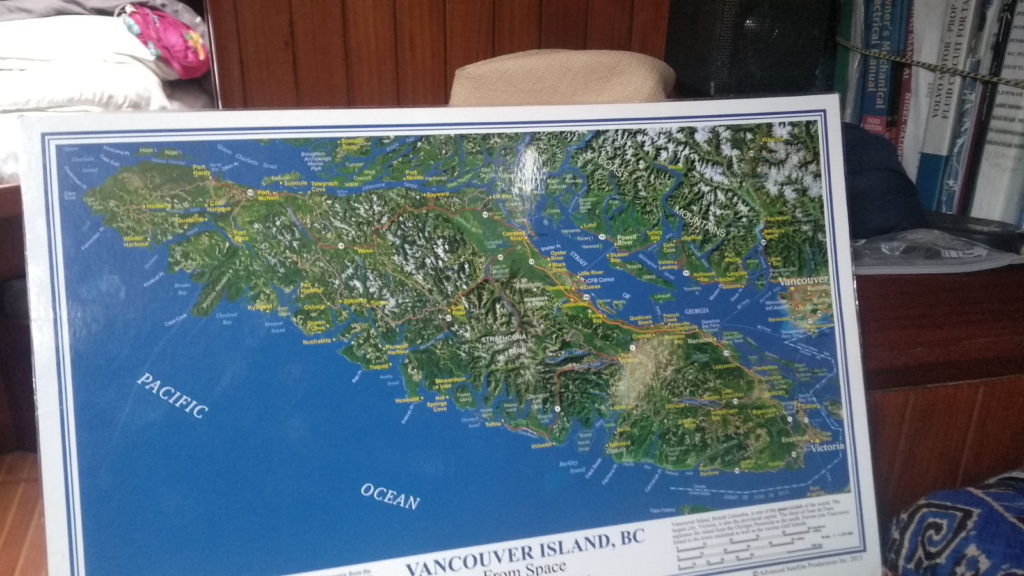
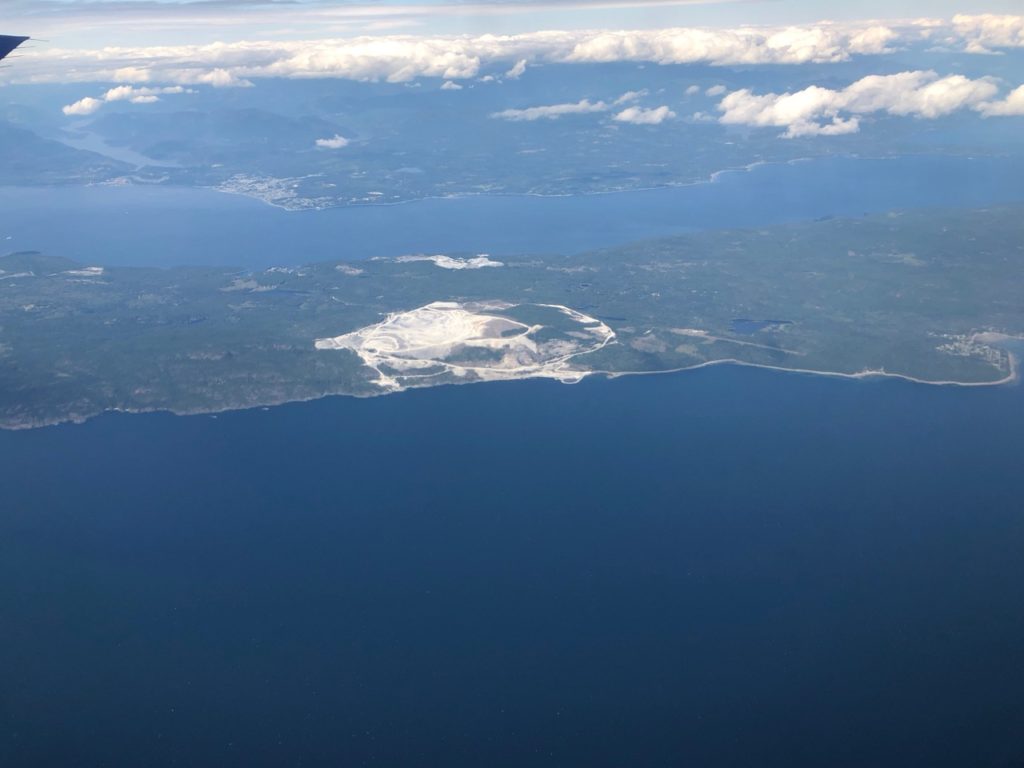
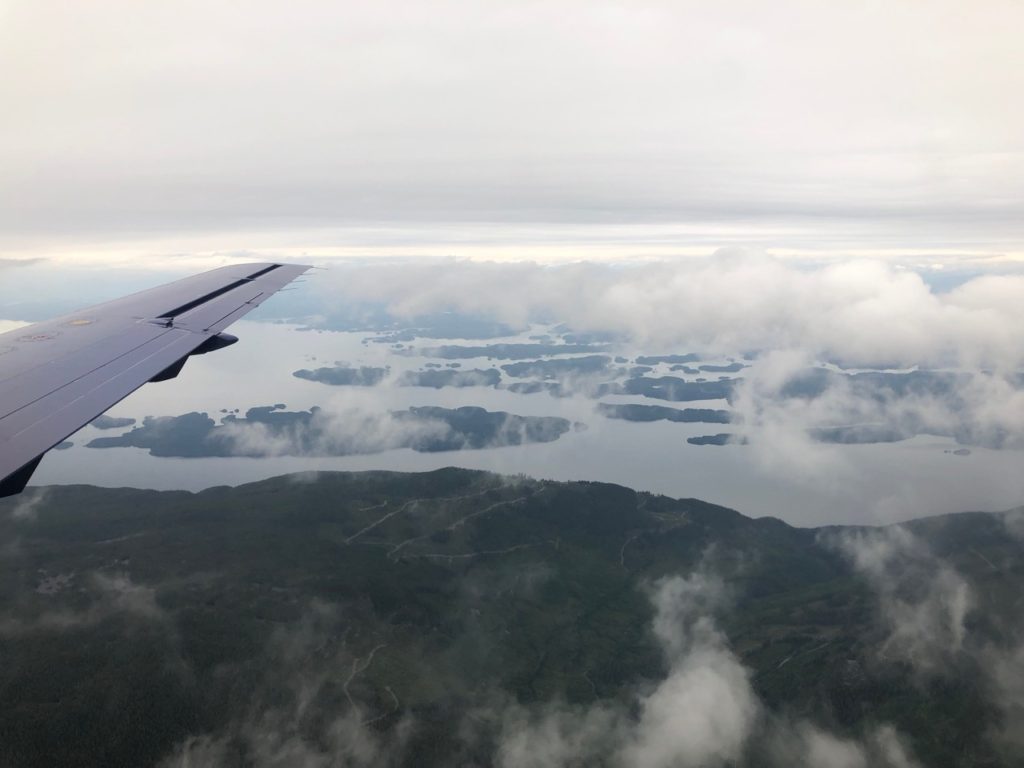
The temperature was indeed a good deal cooler than Vancouver when we stepped out onto the tarmac in the early evening. Paul had booked a taxi to collect us and take us to Port McNeill, and from there we boarded the ferry for the 20 minute crossing to Sointula where our good friend Jim was waiting to drive us on the final part of the journey to the marina and Sister Midnight. On board, surrounded by our bags of stuff waiting to be unpacked and sorted, I marvelled at the fact that it was still fairly early in the evening of 24th July.
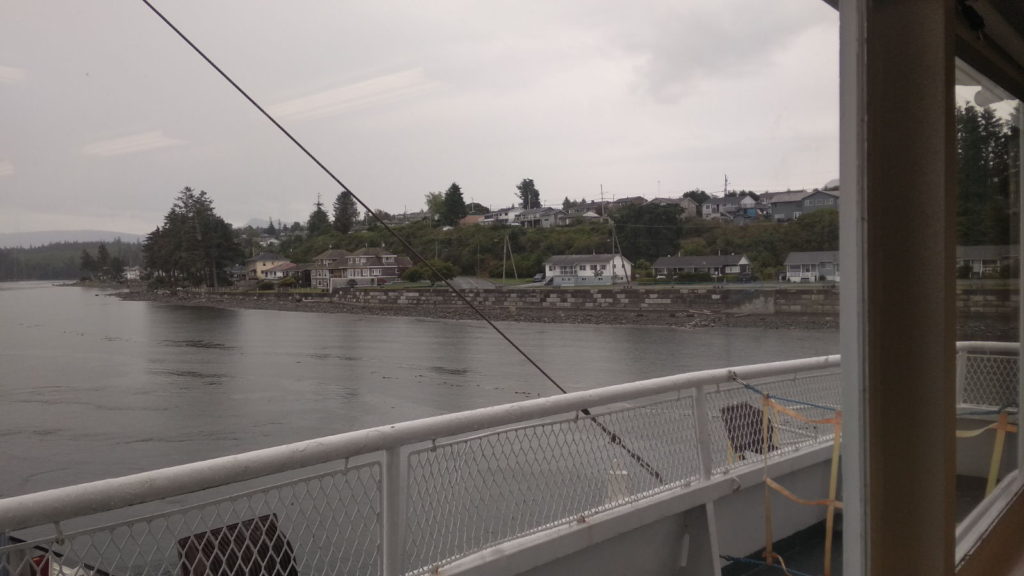
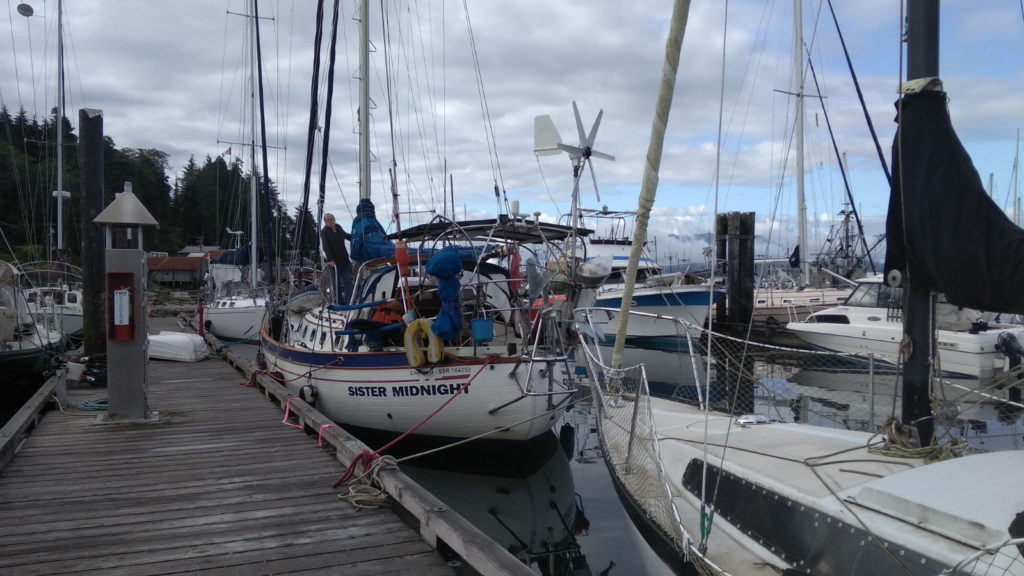
Naturally, it took a few days to get ourselves sorted physically and mentally. There’s always lots to do on boats, and each trip to ours seems to add more ‘stuff’ to find space for on board. I’m guiltier than Paul in this regard and I could see that I would need to ‘lose’ some things in order to make room for others. Luckily there is a thrift store and a book swap facility on the island so I made good use of those during my sorting. It felt great to be back in Sointula and to become reacquainted with Jim and Ivana. They kindly invited us to dinner where we enjoyed a delicious three course meal, good wine and great conversation which was most welcome after a day of unpacking, cleaning and stowing. It was also good to meet Paul’s friends John and Fay who have a house near the marina and were kind enough to send me some ginger beer and a rose picked from their garden when they heard I was feeling under the weather with a tummy bug.
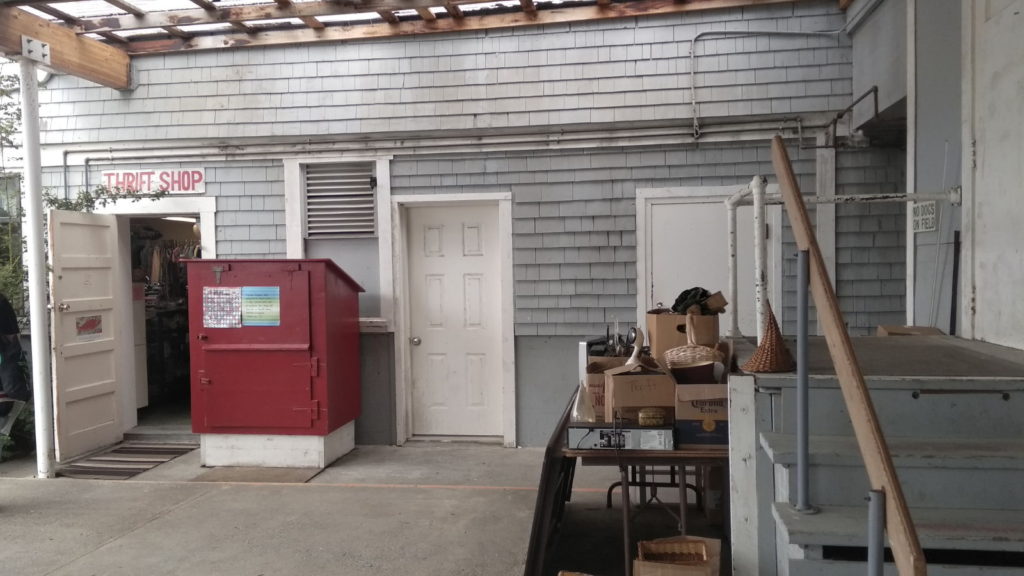
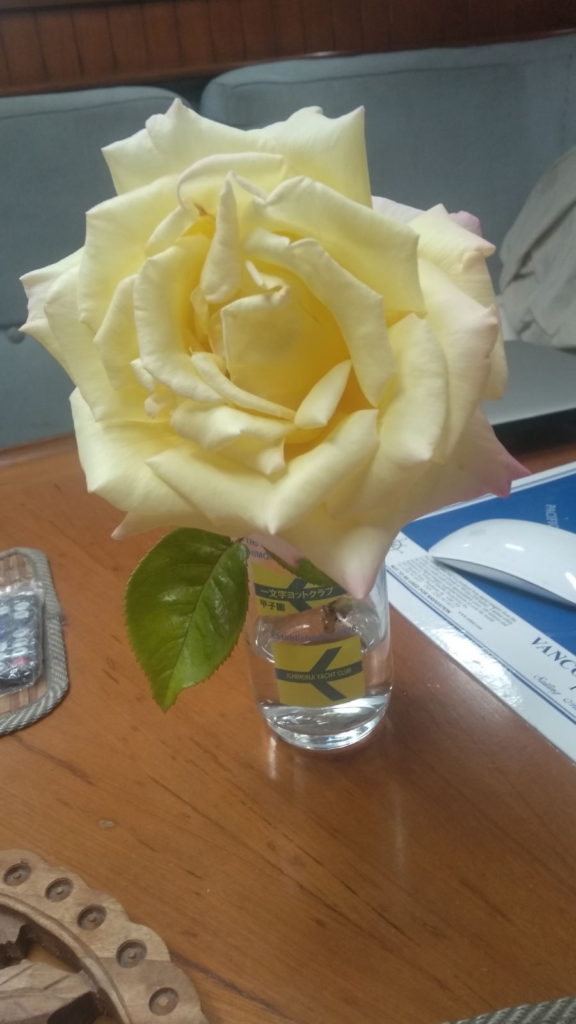
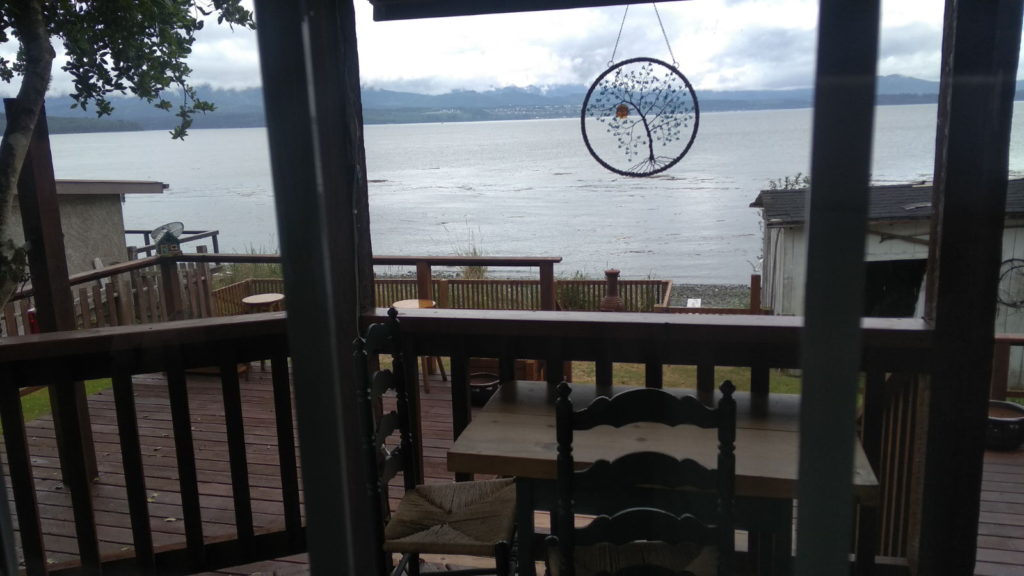
We had a week in Sointula before we planned to go bear hunting in Knight Inlet, so once I had recovered we made the most of the few days remaining by going on bike rides and for short beach and forest walks. We visited the museum and library and gradually got the boat looking ship shape, sea-worthy and stocked with provisions. I was thrilled when I spotted the wild mink Paul had told me about. They have beautiful deep brown fur and resemble weasels as they scurry busily along the pebbly shore looking for food. Often, they venture onto the pontoons and have been known to get inside boats, so they’re obviously not very popular with boat owners. One day, noticing the guy next to us looking despondently at several parts from the interior of his mum’s boat that were laid out on the pontoon, he told us he needed to clean every item thoroughly after one such uninvited visit. Seals are frequent visitors in the harbour waters. Their grey heads, sporting huge, soulful eyes remind me of dogs’ faces when their ears are flattened. There have been lots of dogs around the marina to make a fuss of, which has been lovely for me. One of them paid me a welcome visit while I was feeling unwell. He scampered on board sporting a lime green life jacket and tentatively made his way down the cabin steps for me to stroke him. He was a bit like a Jack Russell but larger. Thankfully he wasn’t too large or heavy for me to lift up when he was ready to leave, because he was unable to negotiate climbing the steps to get out.
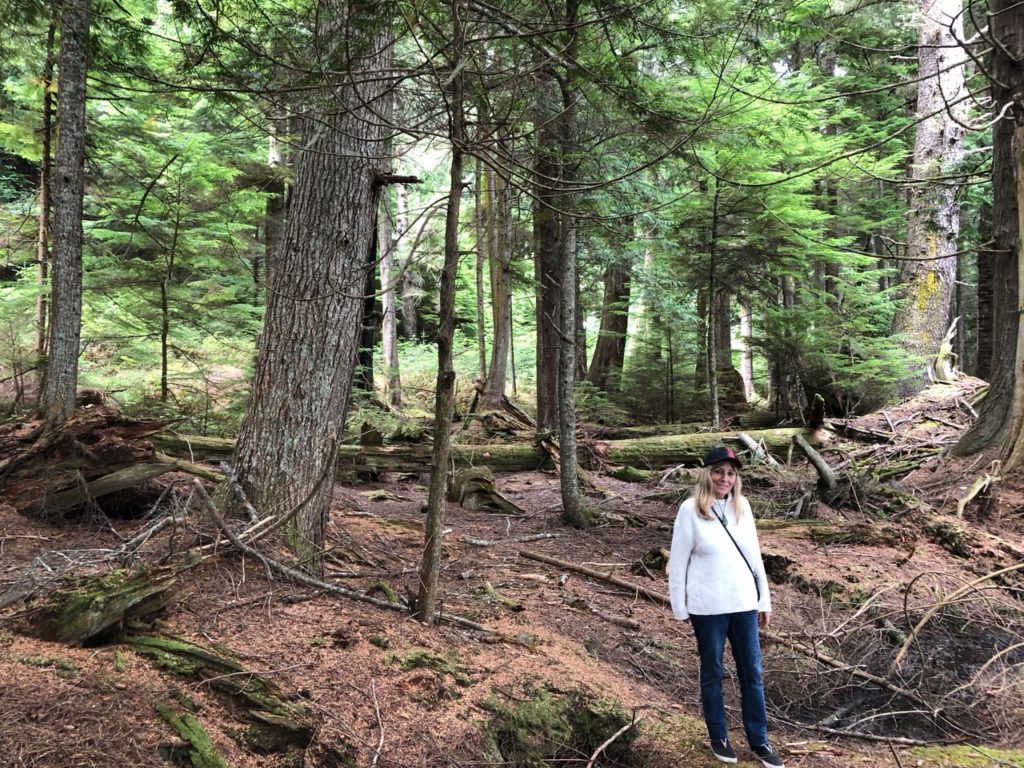
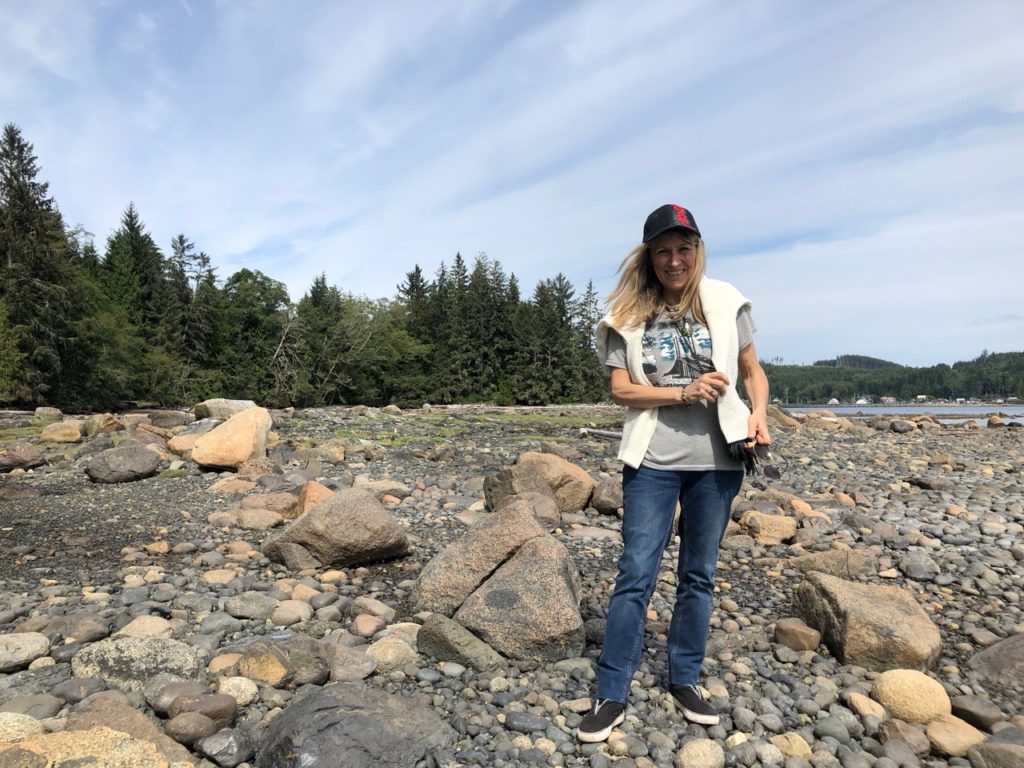
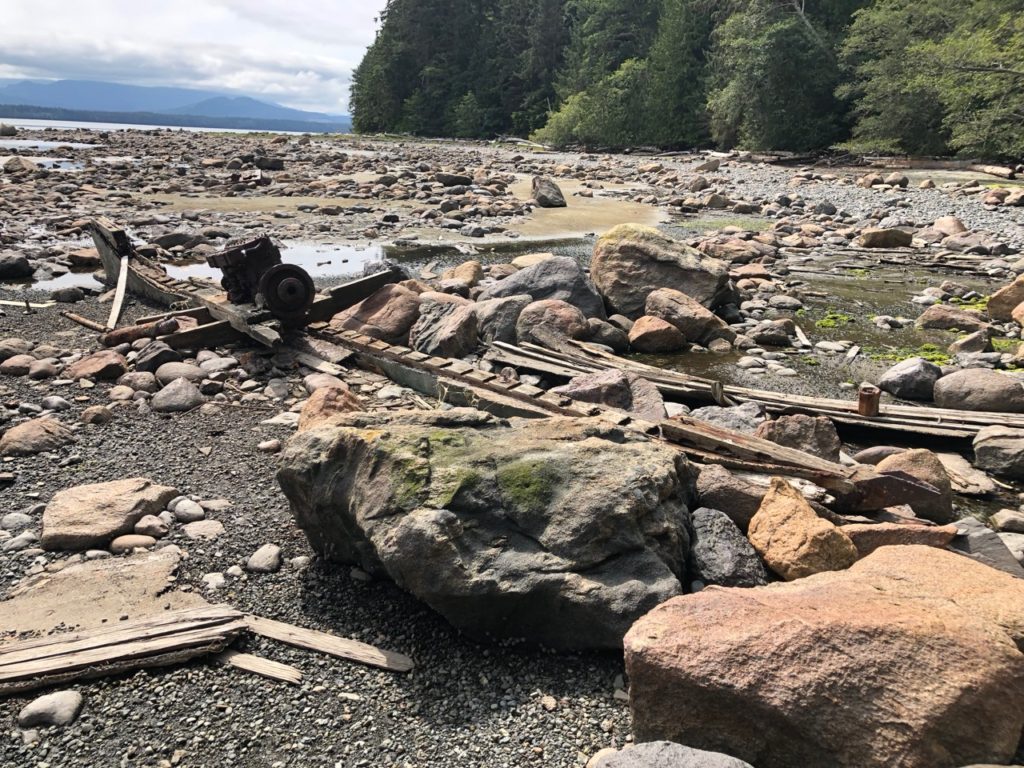
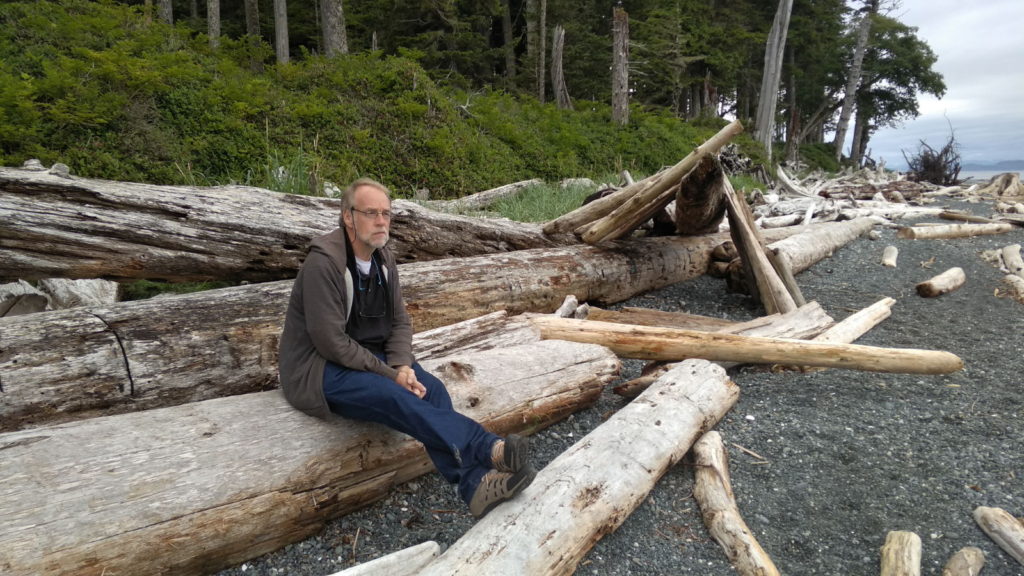
The museum provided a wealth of information on the development of Sointula as a community. The Finnish immigrants who settled there in 1901 wanted to create a utopian community on Malcolm Island based on the principles of equality and freedom. Their leader was a man named Matti Kurikka, described as charismatic and visionary, who along with his friend A.B. Makela gave Sointula (the location selected for their permanent settlement) its name – the word in Finnish means ‘place of harmony’. Four years later a fire, which killed eleven people, caused half the population to leave the island. Despite this and other setbacks, the community gradually realised the life the pioneers had dreamed of. Fishing was their main livelihood, and they also learned to cut and mill timber, establishing a logging company in the 1930s. To all these endeavours, the museum informed us, they brought a spirit of cooperation and a tough determination that the Finns call ‘sisu’. I like that. Today, the Co-Operative store, founded in 1909 advertises lots of events such as plays and musical performances. There is a thriving arts and crafts movement, with several galleries and studios to visit on the island…most importantly though local dogs and cats still have right-of-way here: if one happens to be sleeping in the middle of the road, drivers must go around it.
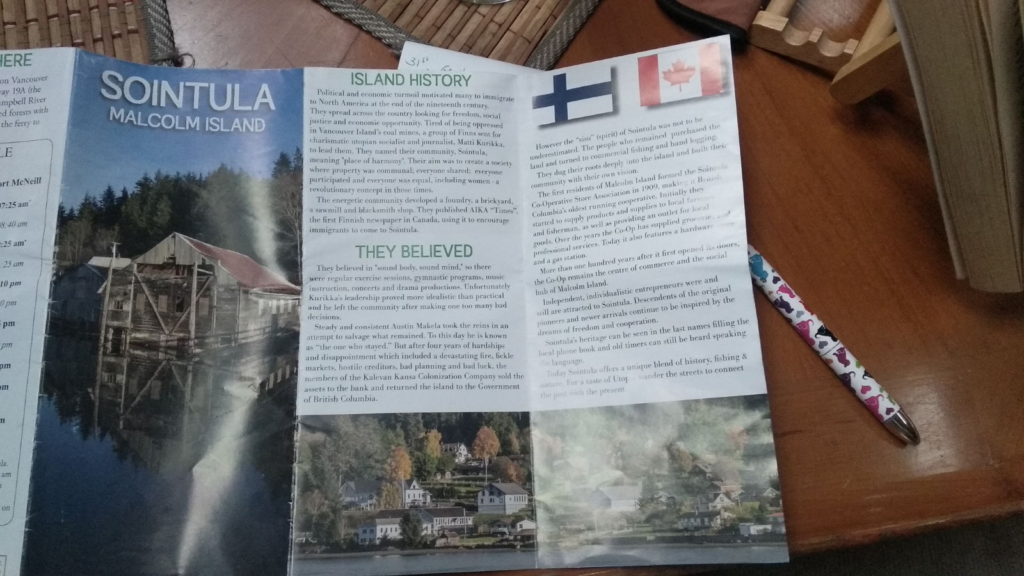
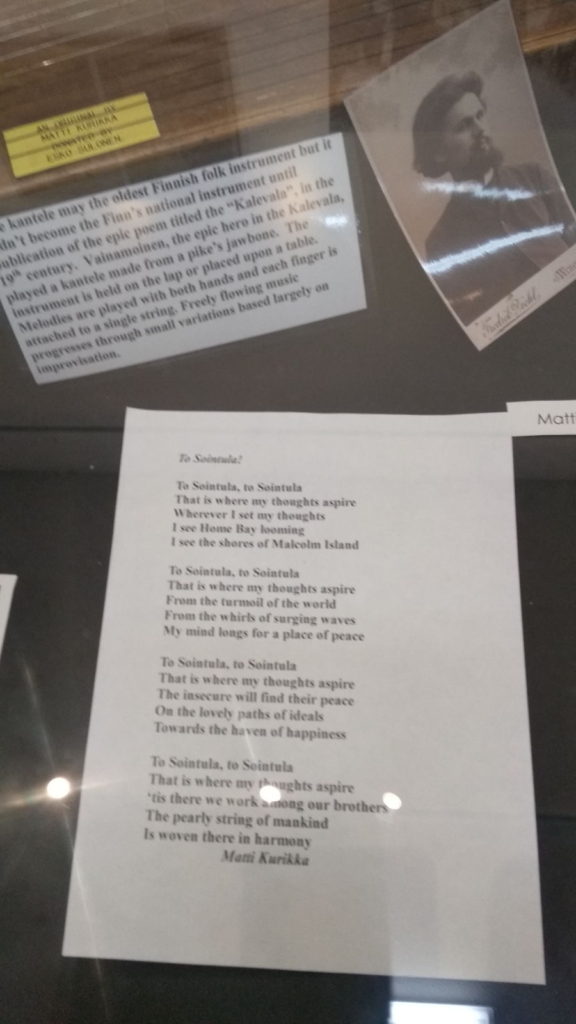
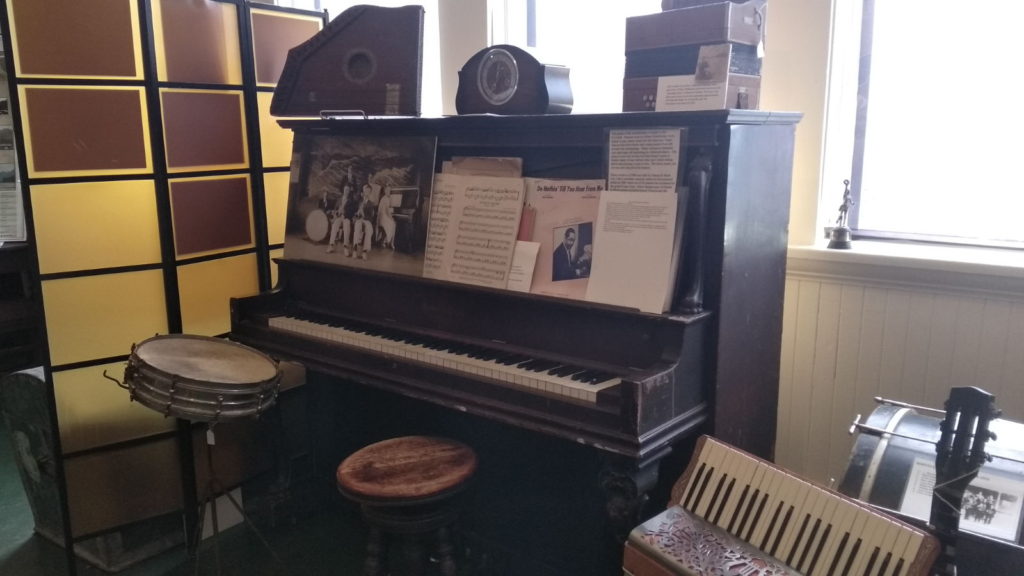
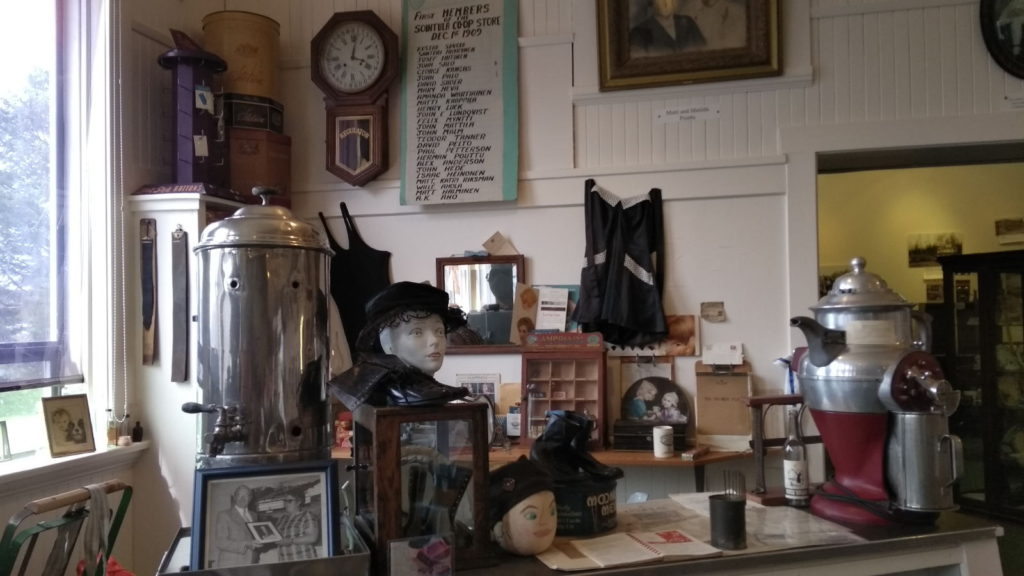
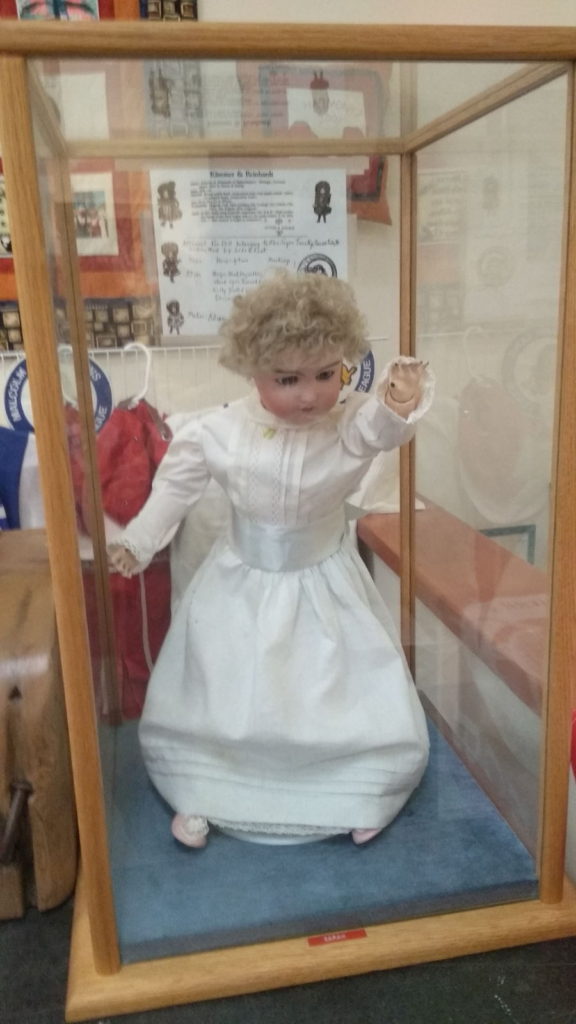
Just before we left we took up Jim and Ivana on their offer of using their car so that we could explore more of the island and venture further afield to places we’d heard were worth seeing. We took a drive along Kaleva Rd to Mitchell Bay, hoping to see the imaginatively-named Big Lake. Mitchell Bay is a lot smaller than Sointula and was very quiet and deserted the afternoon we visited. It seems the whole of Malcolm Island has been creative with their roadside sculptures, models and signs. We saw several on this road. Big Lake was almost missed as we drove back, but Paul spotted the edge of it behind the trees and we got out to take a look. According to Sointula’s tourist leaflet it’s the local swimming hole. There was a float in the centre and it was easy to imagine it full of bathers on a hot day; a very picturesque setting. Pics from the drive below.
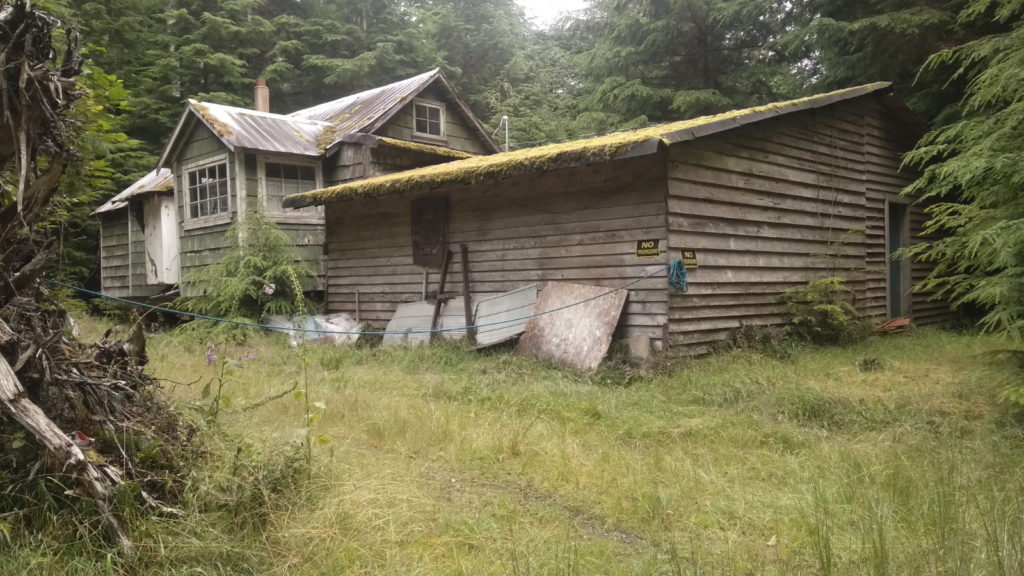
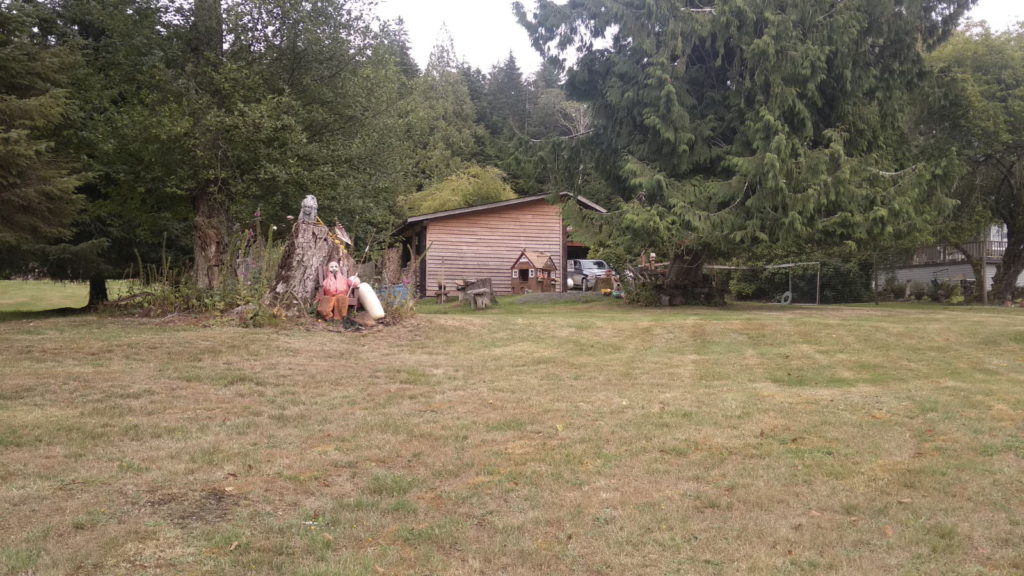
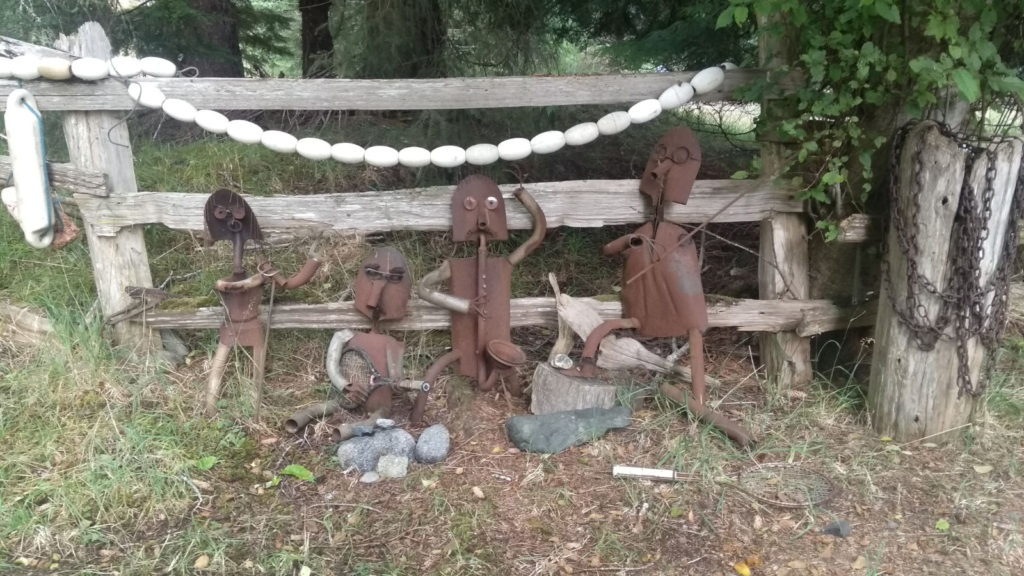
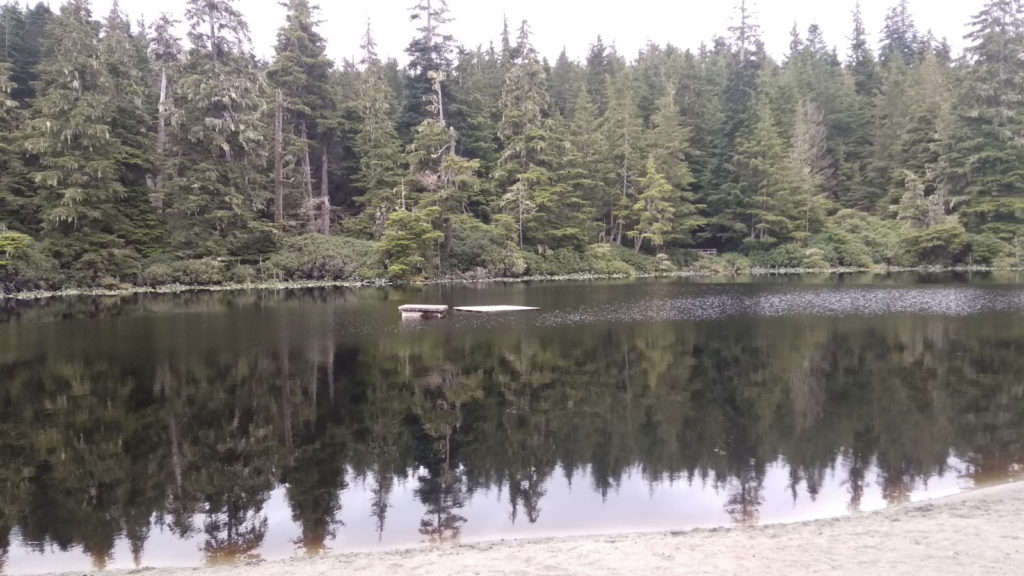
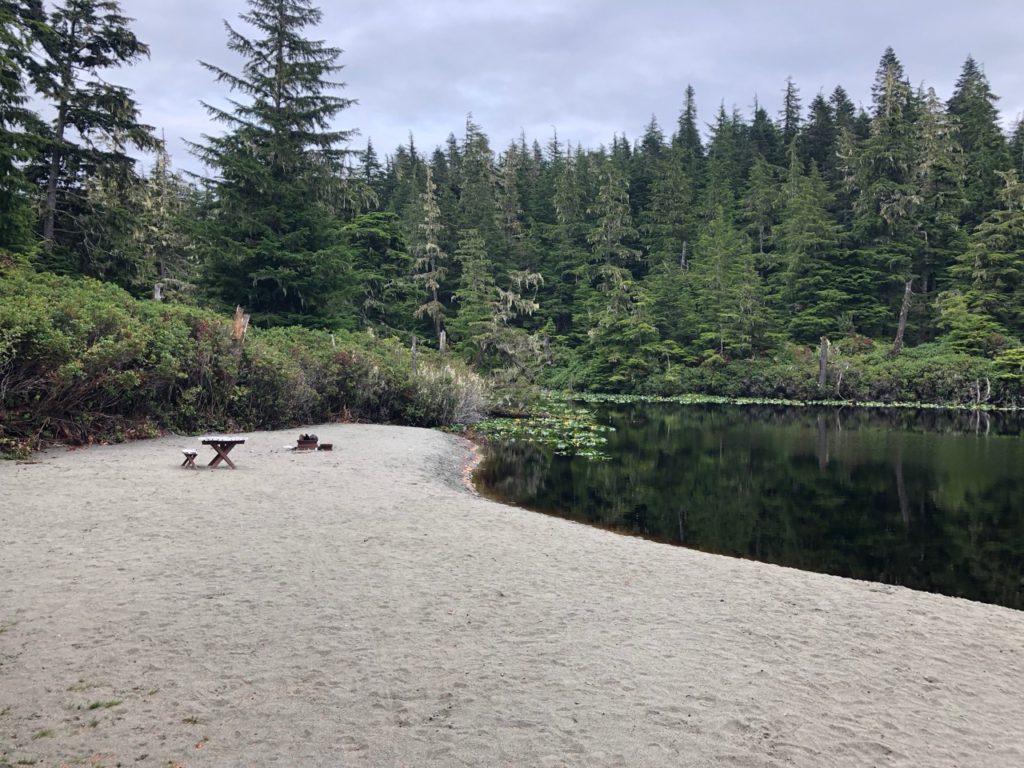
The following day we got the late morning ferry to Port MacNeill. Once you drive on to the ferry you stay in the car for the 20 minute journey…and you only ever pay to go to Sointula – it’s free to leave. We drove to Port Hardy first to provision for our passage to Knight Inlet and I was reminded how much more expensive a supermarket shop is here than in the UK. Our pounds are worth even less than last time we were here thanks to the current fiasco taking place in UK politics. Coal Harbour was our next stop, about 8 miles from Port Hardy. During World War 2 it was a Royal Canadian Air Force seaplane base, and the waterfront still has the large hangar, which was subsequently used as the base for busy whaling station until 1967. Now, the hangar houses the tourist seaplanes and the adjacent land is used for launching facilities and water taxis. In all, it had an industrialised, yet deserted feel to it – nothing to make us want to linger for long.
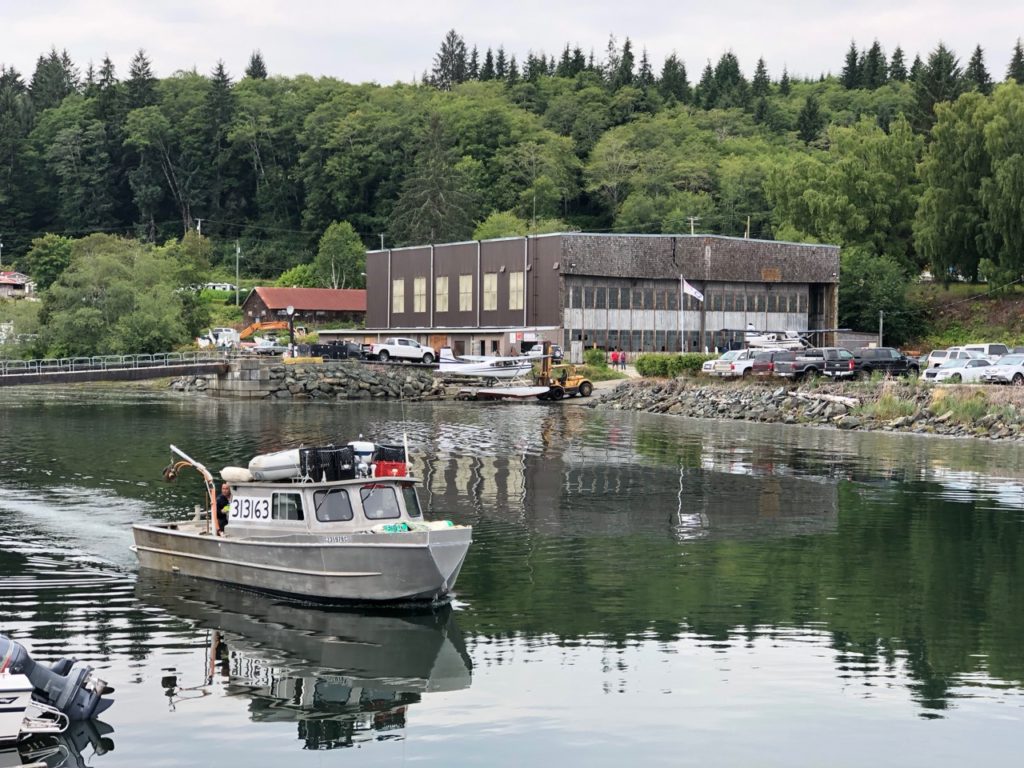
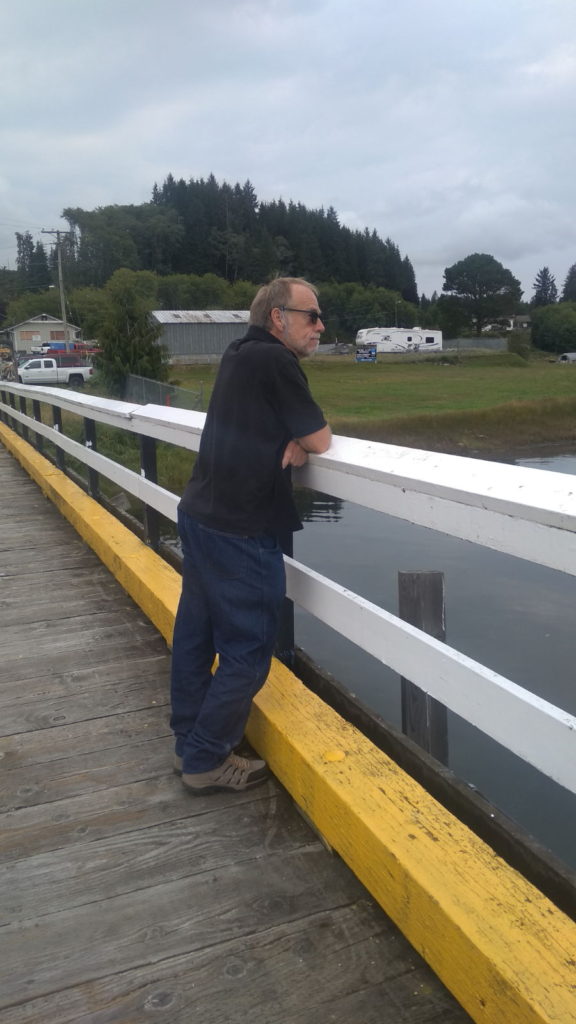
We set off for Port Alice. A sign I had noticed on the way to Coal Harbour proclaimed the route to Port Alice as the most scenic drive in the area (or something like that). Once on the road, we were surrounded on both sides of it by thick, high forest which was certainly striking, especially when the trees bowed from either side to form arches. It reminded us of roads in The Lake District. The waterfront village was charming; pretty and quiet. So far, however, Sointula has been by far the loveliest place we’ve spent time in. If we wanted to see bears and explore The Broughtons, however, we needed to bid it a fond farewell.
Kathy
